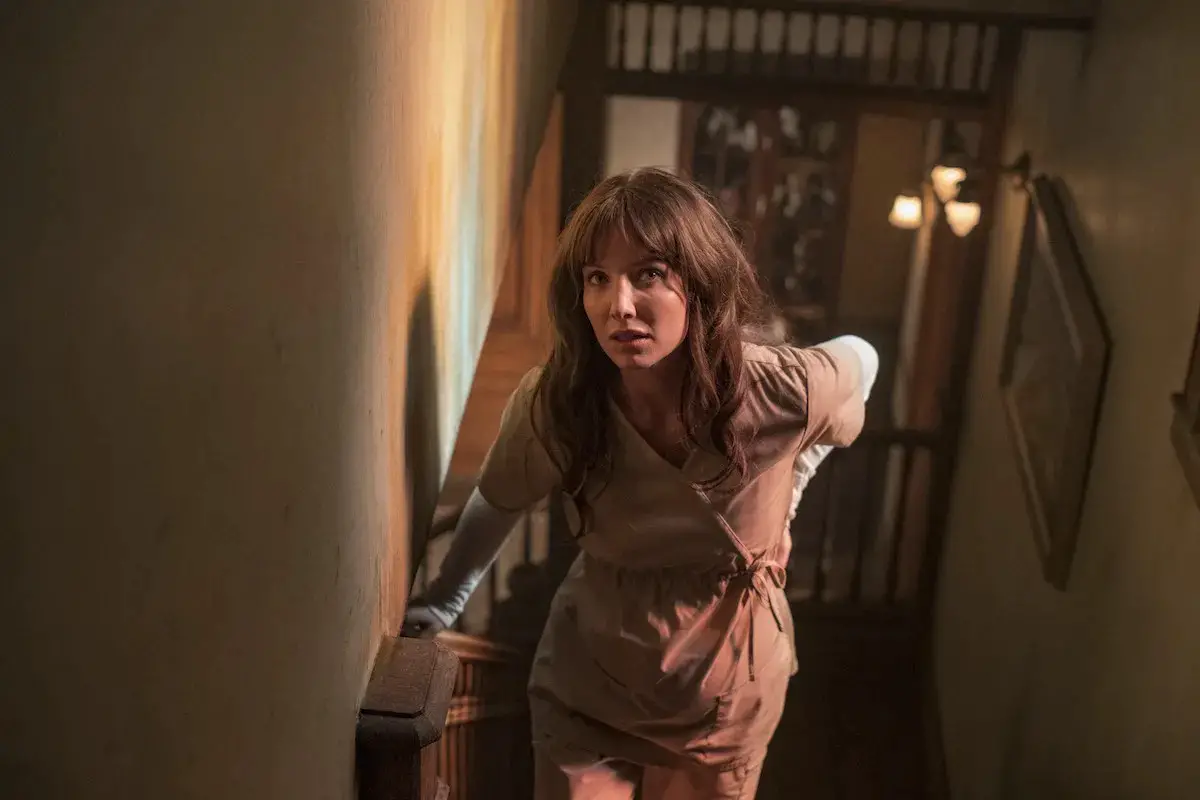From the film’s opening shot of a comically ornate gothic hospital at the edge of a cliff, it’s clear that audiences should not expect “Malignant” to be the next “Conjuring.” Despite what the trailers and marketing may have viewers believe, “Malignant” is very different from director James Wan’s well-known studio horror franchise. Wan himself even stated in the newest issue of SFX magazine that viewers shouldn’t go into his newest film expecting something like the “Conjuring” films, and it’s clear why. Viewers expecting nonstop scares may be disappointed by the near-parodic campy qualities of “Malignant,” but those properties will certainly gain the film just as many defenders as critics.
“Malignant” centers on Madison, a woman in an abusive marriage who has recurring visions of murders as they happen — murders that may tie into her mysterious childhood. As Madison and her adopted sister search for clues for the cause of these murders and these visions, they find themselves facing a monstrous killer who seems hell-bent on wreaking havoc on Madison’s life. Investigating from the opposite direction, police detectives begin to suspect Madison herself of the murders, setting the stage for a conflict that is unfortunately underused.
It’s best to go into this film as blind as possible; in a rare case of excellent marketing, even the trailers don’t reveal the absurdly enjoyable twist that is the third act.
A Few Blunders
There are many areas in which “Malignant” seemingly makes fatal missteps that would ruin a lesser movie. The performances range from competent to laughable, the soundtrack is a bizarre mix of generic horror violin shrieking and mid-2000s butt rock, and the houses in which the film takes place are so comically under-lit and smoky it’s a miracle anyone could live there.
The film’s first half features several ineffective scares that are staples of modern horror films, like fake-out jump-scares or conspicuous shadowy figures accompanied by more violin twanging. None of it is particularly scary, although Madison’s visions of the murders are visually fairly interesting, with dissolving scenery and neon lighting. It’s mildly interesting and competently produced, but it’s by no means engaging.
However, things go off the rails in the film’s final act. Without wishing to spoil the film, the killer’s identity (while predictable) is revealed in such a fantastic way it negates all of the tedium of the film’s first half. “Malignant” culminates in a series of bizarrely well-choreographed sequences that would not be out of place in a film adaptation of “Mortal Kombat,” providing a thrilling and unexpected conclusion to a movie that sorely needed one.
Comparison to Wan’s Earlier Successes
“Malignant” lies well within the realm of campy horror fun, but given Wan’s earlier filmography, it’s clear why opinions of the film have been so mixed. Prior to the film, its director made a name for himself as a horror natural through his direction and production work on the “Conjuring” and “Insidious” series, as well as a competent director overall for his work on “Aquaman.” These ventures received mostly positive reviews, serving as well-built if not particularly groundbreaking films. The “Conjuring” series in particular was a hit for the studio, raking in a combined total of almost $1.5 billion. Because of these past successes, it’s no wonder that Warner Bros. allowed Wan to make a film that seems at times like an intentional parody of his earlier horror filmography as well as a tribute to classic horror.
In interviews, Wan compared “Malignant” to Italian “giallo” films such as those directed by Dario Argento, the “Italian Master of Horror” best known for his films “Suspiria” and “Inferno.” Giallo films are known predominantly for their vibrant color palettes and striking gore, often containing elements of both supernatural horror and slasher films. A recurring motif in giallo films is the concealed killer, who sports black gloves and a trench coat, and is often obscured by camera trickery and shadows.
The parallels to “Malignant” are obvious — many of the films’ posters contain the clashing reds and blues often associated with giallo films. The killer fits perfectly into the giallo mold, an imposing gloved and trench-coated figure with shaggy hair, whose animalistic and unnatural movements perfectly add to his mystique. These intentional stylistic choices seem to clash with some elements of the film that feel almost like self-parody, although it hasn’t yet been revealed whether this was Wan’s intention.
The “Conjuring” and “Insidious” films, while distinct from one another, shared a number of similarities that could be seen as cliches of modern horror films. Each centered on families tormented by supernatural forces, often in homes that seemed normal outside but inside were a mess of overly dingy hallways and rooms far too large to exist in the houses shown in the films’ establishing shots. Many of the families depicted were dysfunctional in some way or another, with abusive parents or distant children.
“Malignant” seems to take these tropes of Wan’s earlier works to such extreme lengths it becomes difficult to see them as anything other than deliberate self-parody. There are about half a dozen establishing shots of Madison’s house, a relatively normal suburban Victorian-style two-floor house. Yet its interior is shown to contain many sprawling rooms that seem like they belong in a mansion triple the house’s size. Likewise, Madison’s husband is so awful and physically abusive it almost borders on absurdity, as with barely any provocation he switches from calm conversation to slamming her head into a wall with such force that the wall cracks.
“Malignant” is tonally inconsistent, with gory murders juxtaposed with comically bad dialogue and inexplicable action sequences. It may not be a great horror film, but it is a dazzling (if bewildering) cinematic experience.

















